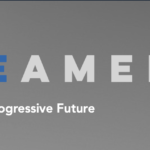Daniel Denvir is the best reporter I've seen at pointing out the long term strategies of schools privatization, and his piece in this week's The Nation might be his best yet. I strongly urge you to read it all, because the issue is too complex for bullet points:
In 2010, State Attorney General Tom Corbett was elected as governor, his political network heavily populated by advocates for private-sector education reform. Backed by a conservative state legislature, Corbett cut about $860 million from public education in his first budget rather than tax the state’s booming natural-gas industry. He also expanded Pennsylvania’s “voucher lite” programs, popular among conservatives, which provide corporations with major tax credits in exchange for donations for private-school tuition.
“This budget sorts the must-haves from the nice-to-haves,” Corbett told the Legislature during his March 2011 budget address. “I am here to say that education cannot be the only industry exempt from recession.” Philadelphia was forced to eliminate more than 3,500 teacher and staff positions. The crisis also set off the most aggressive privatization campaign since the state takeover, embodied by the so-called “Blueprint for Transformation” plan.
The plan was drafted by the Boston Consulting Group, an elite corporate consulting firm with a record of contract assignments for public-school districts. The proposal called for closing sixty-four schools, gutting the central office staff, privatizing blue-collar jobs if the unions didn’t offer major concessions, and carving up the remaining schools into “achievement networks” potentially managed by private third parties. Public displeasure caused the plan for achievement networks to be shelved, but twenty-four schools were closed.
For privatization-minded reformers, the creative destruction unleashed by Corbett’s budget cuts presented an opportunity to implement a new round of privately managed restructuring. In May 2013, just before the School Reform Commission approved what Philadelphians called the “doomsday budget,” Teach for America founder Wendy Kopp—an icon of the self-described reform movement—tweeted: “In Philadelphia today, so much more to be done, but I can’t get over the progress in this city’s schools in the last decade!”
Wealthy donors and local and national foundations poured funding into a new reform-movement infrastructure to back the growth of nonprofit charters, which had continued their rapid expansion even as the for-profit experiment collapsed. The Philadelphia School Partnership (PSP), founded in 2010, quickly grew into the city’s most powerful pro-charter and anti-union organization, thanks to a $15 million grant from the local William Penn Foundation—the same entity that had funded the “Blueprint for Transformation” plan.
“Change is the only option,” declared Mark Gleason, the PSP’s chief executive, in testimony before state legislators in 2013. “We may not fully know which changes will make the most difference, which will transform outcomes for poor and minority students. But we have some good clues—we even have some proof points right here in Philadelphia—and we know the status quo is most definitely not working for disadvantaged students. The debate we should be having is about which changes are worth trying—not about saving a failed system.”
The new reform groups built ties with a pre-existing conservative network in the state, including pro-school- voucher groups like the Students First PAC, a wealthy political-action committee funded by the libertarian managers of a suburban Philadelphia investment firm.
StudentsFirst, a separate group led at the time by former Washington, DC, schools superintendent Michelle Rhee, also founded a state chapter. PennCAN, the state affiliate of the national group 50CAN, was launched in the PSP’s office. The Gates Foundation, a major backer of reform projects nationwide, funded the creation of a quasi-governmental body staffed by the PSP, the Great Schools Compact, dedicated to promoting its vision for change. It is, Gleason said earlier this year, a matter of “dumping the losers” to “create a higher bar for what we expect of our schools.” But the process of judging winners and losers amid wrenching austerity cuts has proved highly controversial. The Renaissance schools run by Mastery have demonstrated strong test-score gains. Even so, the district-run Promise Academies showed the same encouraging results—until their budgets were gutted.
Let me remind you that the main reason we see hedge funders involved in school "reform" is that they get a tax credit of 300% over ten years. That beats the market. Take away that tax credit, and you'll be amazed at how quickly the air leaks out of the for-profit schools' bubble.


















